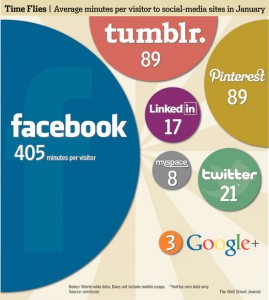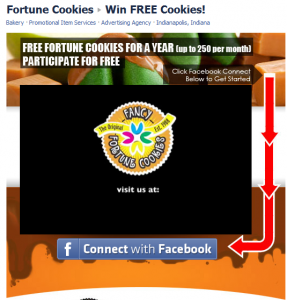The global IT industry is in the middle of an epic platform shift and the rules for survival in a market built on mobility, big data analytics, social business and cloud computing will be very different than those that applied to the previous client/server generation.
| Download Frank Gens’ slides here |
That was the message from IDC Senior Vice President & Chief Analyst Frank Gens as he kicked off the research firm’s Directions 2012 conference in Boston this morning. Gens, who has tracked the computer industry since the days when mainframes ruled the earth, outlined a dramatically new economic structure that will emerge as economies of scale take hold.
“Volume is going way, way up and price is going way, way down,” he said of the new software market. “If [technology companies are] going to drive large-enough volumes to support the revenue levels they’re used to, they’re going to have to drive the number of customers way up. You’ll need millions of customers in order to compete.”
Gens outlined some striking changes in the platforms and architectures that underlie what he called the “third platform” of computing after mainframe and client/server. Among them:
- Spending on mobile data services will surpass spending on fixed data services this year for the first time. “That’s a crossover that will never cross back,” he said.
- The 700 million mobile devices shipped in 2012 will roughly double the number of fixed devices shipped during the same period. Spending on mobility will exceed spending on PCs and servers for the first time.
- The volume of unstructured data in corporate data centers will exceed the volume of structured data for the first time.
- China will surpass Japan to become the world’s second largest IT market at about $170 billion.
But the most startling changes Gens outlined concerned the software applications market, where downloadable free and low-cost apps are redefining the economics of the business. IDC forecasts a five-fold increase in annual apps downloads to 137 billion by 2016. Only about 18% of those apps will be paid for, and average prices will fall from $1.59 today to 82 cents. “That’s spooky stuff when you consider that PC apps average about $25” and that that market isn’t growing, Gens said.
Technology companies will need to overhaul their business models to accommodate these shifts. In order to attract the thousands of new customers they’dd need to recruit each day, vendors will have to become experts at cultivating communities and working with partners and even competitors. In other words, word of mouth marketing is the only viable promotional model.
Will Microsoft be a player in mobile platforms? It may be, but Redmond has a lot of work today, Gens said. A recent IDC survey asked developers which platforms they were “very interested” in targeting. Apple IOS for the iPhone came in first at 90%, followed closely by Google’s Android for smart phones. HTML 5 was a strong third. Microsoft’s Windows Phone 7 was a weak fourth at under 40%. Can Microsoft compete? “We should know in the next 12 to 18 months,” Gens said.
Tech firms will also need to serve a wider variety of vertical markets because price deflation won’t permit the luxury of focusing. Fortunately, IDC has identified more than 40 new specialty industries made possible by platform shift, including medical assistant online, social mobile commerce and smart buildings.
And if these pressures weren’t intense enough, don’t forget overseas competition. Gens said the business models that support high-volume, small-transaction markets are being honed right now by Indian, Chinese and Russian companies that have worked in that environment for years. US firms, with their high costs and margins, are going to struggle to adapt to a leaner and more competitive way of doing business.
This is one in a series of posts sponsored by IBM Midsize Business that explore people and technologies that enable midsize companies to innovate. In some cases, the topics are requested by IBM; however, the words and opinions are entirely my own.








 When it comes to innovation, everyone wants to know what the leaders are doing, and you won’t find many firms with a better innovation track record than Minnesota Mining & Manufacturing (3M). At Lotusphere today, two representatives to 3M outlined some ways the company is using collaboration platforms to improve access to expertise and information across the far-flung company, which has people in more than 60 countries.
When it comes to innovation, everyone wants to know what the leaders are doing, and you won’t find many firms with a better innovation track record than Minnesota Mining & Manufacturing (3M). At Lotusphere today, two representatives to 3M outlined some ways the company is using collaboration platforms to improve access to expertise and information across the far-flung company, which has people in more than 60 countries. 3M’s track record of innovation is legendary, but globalization has presented new challenges. “We’re a century-old company founded on the principles of collaboration, but now we’re worldwide, said Jeff Berg (left), IT eBusiness Architecture and Development Manager.
3M’s track record of innovation is legendary, but globalization has presented new challenges. “We’re a century-old company founded on the principles of collaboration, but now we’re worldwide, said Jeff Berg (left), IT eBusiness Architecture and Development Manager. These questions were all answered in minutes, said Michael Lynch (right), Manager of IT Advanced Personal & Workgroup Solutions. People have gravitated to Socialcast “because of the speed and light touch.”
These questions were all answered in minutes, said Michael Lynch (right), Manager of IT Advanced Personal & Workgroup Solutions. People have gravitated to Socialcast “because of the speed and light touch.”